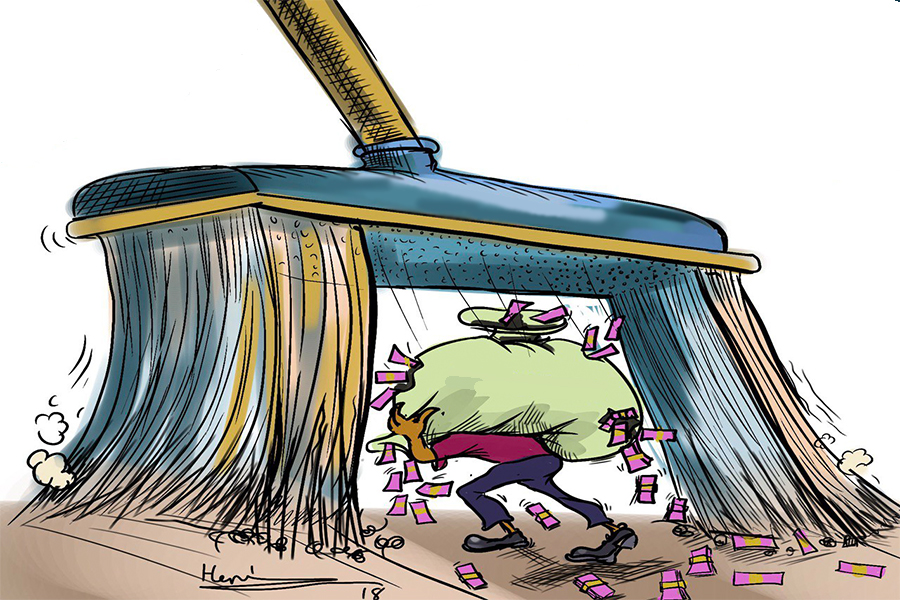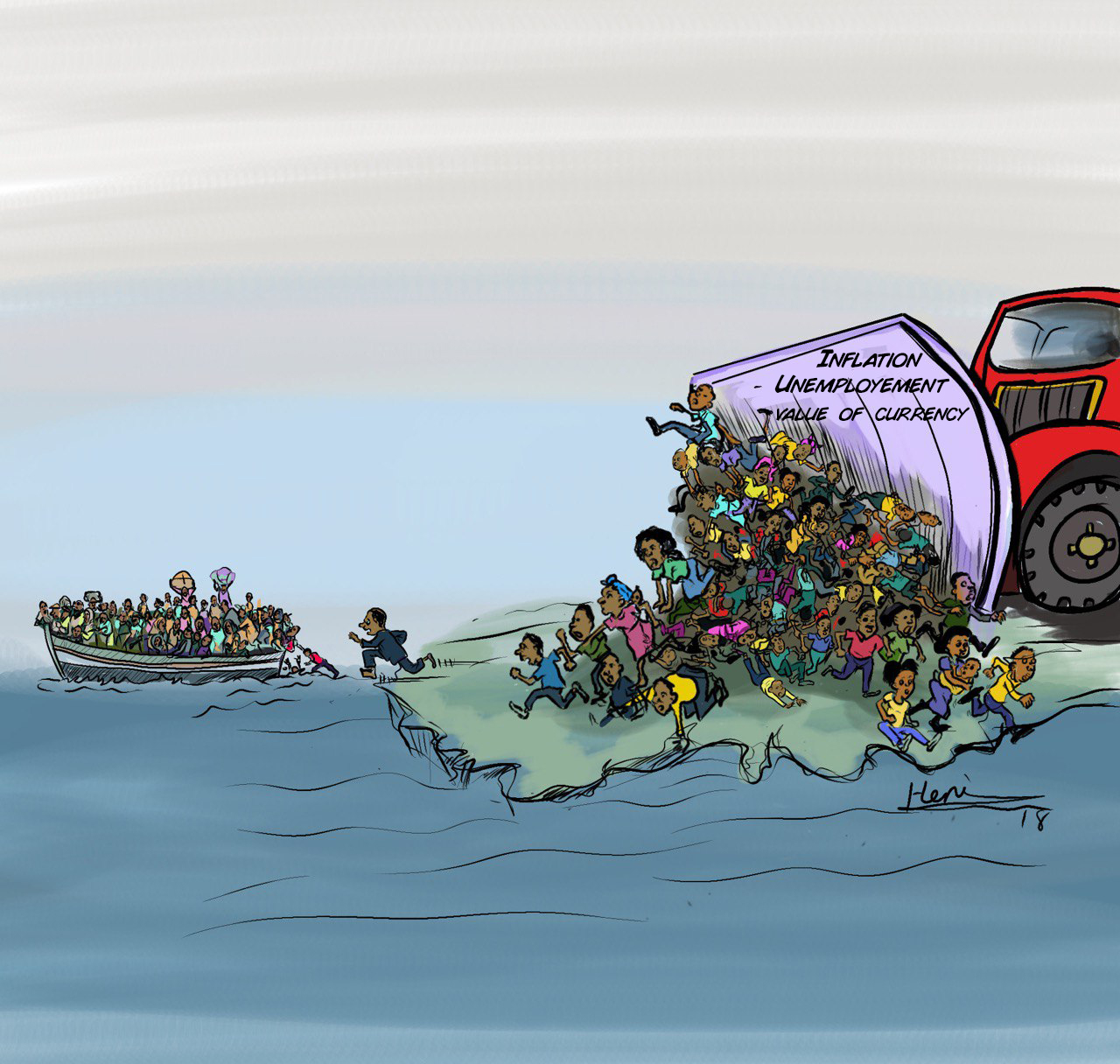
Photo Gallery | 180856 Views | May 06,2019
Sep 27 , 2025. By NAHOM AYELE ( FORTUNE STAFF WRITER )
Pharmaceuticals rise and their promise of affordable medicines is shadowed by shortages of the very raw materials needed to keep assembly lines moving. At the Inter Luxury Hotel last week, industry executives gathered not to celebrate, but to voice growing concerns that, despite state support, local drug makers face “weeks, or even months,” of delays when securing dollars for imports.
The pharmaceutical industry, which has long been championed as a vehicle for import substitution and national self-reliance, is facing mounting pressures.
Currency shortages, rigid procurement frameworks, and tight financing conditions are combining to strain the industry's capacity to deliver essential medicines. Industry executives caution that while macroeconomic reforms promise long-term efficiency, they have collided with entrenched bureaucratic practices, creating short-term disruptions that threaten the continuity of the medicine supply across the country.
Over the past three years, the federal government has aggressively promoted domestic pharmaceutical manufacturing. Public procurement from local drug firms has ballooned, from under one billion Birr to 15.6 billion Br, while the portfolio of essential medicines produced domestically has expanded vastly.
Three years ago, only two of the most procured essential medicines were sourced domestically. Today, that number has grown to eight. Out of the 262 essential medicines purchased annually, the share produced by local firms has risen to 41pc.
The surge in local production is not merely a statistical phenomenon. Milestones include a doubling, to six, in the number of firms certified under Current Good Manufacturing Practices (CGMP), and a complete halt in imports of medicated gauze.
“These gains illustrate the industry’s resilience,” said Daniel Waktole, president of the Ethiopian Pharmaceuticals & Medical Supplies Manufacturers Association (EPMSMA), speaking on the sidelines of the Association’s general assembly at the Inter Luxury Hotel, on Marshal Tito Road, last week.
The Association comprises 26 of the country’s leading Pharmaceuticals & Medical Supplies Manufacturers. But Daniel also issued a stark warning.
“Banks are no longer required to prioritise our sector for forex,” he told Fortune. “That means waiting weeks, or even months, for the foreign currency needed to import raw materials. Delays in forex allocations now directly cause shortages.”
Historically, pharmaceutical manufacturers shared the same foreign currency priority as importers of fuel and fertiliser. This changed in July of last year, when the National Bank of Ethiopia (NBE) revised its foreign exchange allocation directive, removing pharmaceuticals from the priority list.
The consequence, Daniel saw, has been severe.
“If I open a Letter of Credit (LC) today, I won’t get the funds for months,” he said. “By then, if the dollar has appreciated, the additional cost falls on us. It’s not sustainable.”
He complained that firms should now deposit more than 100pc of the forex value upfront, on top of commissions and service fees, before an LC is even processed.
Although the Association has raised its concerns with the officials at the Central Bank, the ministries of Finance and Health, and the Ethiopian Bankers Association, responses from the banks have been “inadequate,” according to Daniel.
“All we ask is for support as part of their social responsibility.”
Banks reject allegations of negligence. According to Demissew Kassa, secretary general of the Ethiopian Bankers Association, the forex policy change came from the NBE, not commercial banks.
“If NBE commands, banks comply,” he said.
Demissew defended the practice of demanding full deposits before opening LCs, noting it addresses the risk of importers failing to clear or sell their shipments. He also rejected claims that banks charge more than a four percent commission, down from 14pc last month.
“This is standard practice globally,” he told Fortune. “In fact, the Ethiopian system is comparatively lenient.”
Even if forex challenges were resolved, manufacturers face another constraint in rigid procurement contracts. The Ethiopian Pharmaceuticals Supply Service (EPSS), the government’s primary buyer, imposes year-long fixed-price agreements that offer no flexibility for exchange rate fluctuations or rising production costs.
“Our margins are eroded,” said Daniel. “We bid months in advance, with no way to predict the Birr’s depreciating value or input price hikes.”
He would like to see EPSS follow the example of other countries, where reference prices are regularly updated and contracts are adjusted accordingly.
“We urgently need such a mechanism here,” he said.
The Birr has lost nearly 154pc against the dollar in one year beginning in August 2024. In global markets, contracts typically allow price adjustments for fluctuations above three percent.
“Here, there is no such clause,” Daniel said. “This forces companies to either bid high, appearing uncompetitive, or accept loss-making deals.”
EPSS Deputy Director General, Aknaw Kawza, offered a different perspective. He attributed cost overruns to frequent delivery delays.
“Manufacturers often request extensions, pushing delivery dates beyond contract periods, he told Fortune. “Prices shift during that time, affecting revenues.”
According to Aknaw, a five-year framework contract is under development, which would allow for annual price adjustments, potentially serving as a compromise to ease pressure. He disclosed to Fortune that his agency already tolerates domestic bids up to 25pc higher than imports, but warned that further flexibility would burden taxpayers.
“We supply public institutions,” he said. “We can’t pass excessive costs to the public.”
He urged manufacturers to adopt a long-term outlook.
Lack of working capital is another bottleneck. Banks require collateral that many manufacturers cannot provide. Industry leaders proposed a model in which the Association would guarantee bank loans. After goods are delivered, it would settle the loan before paying the manufacturer.
Banks are wary about this. Demissew acknowledged that state-owned banks, such as the Commercial Bank of Ethiopia (CBE) and the Development Bank of Ethiopia (DBE), might consider such schemes if EPSS offered guarantees. But private banks see it as risky.
“We manage public funds,” he said. “Lending must be based on viability and risk, not promises from other institutions.”
EPSS directors are also hesitant, concerned about exposing themselves to this level of risk.
“If a firm fails to deliver, banks will deduct the amount from our accounts,” said Aknaw. “This requires a policy-level solution. We cannot decide this alone.”
The Association leaders were careful not to sound like they were rejecting macroeconomic reforms outright. They acknowledge that market-based forex allocation and investor-friendly policies are vital for long-term competitiveness. Recent incentives for pharmaceutical manufacturers and harmonisation with continental regulatory frameworks are seen as positive steps.
But the transition is proving painful for them. Tadesse Teferi (MD), the newly elected president of the Association, blamed the mismatch between forex-based input costs and Birr-denominated revenues.
“Even with strong demand and efficient operations, contracts can quickly turn loss-making,” he said. “Margin erosion is now widespread.”
Tadesse proposed a targeted fix, allowing contracts to reflect currency fluctuations partially. Inputs priced in foreign exchange would be converted at the LC settlement rate, while other costs would remain in Birr.
“This isn’t about reversing reform,” he told Fortune. “It’s about ensuring reform doesn’t destroy local capacity.”
Not all developments are discouraging for the pharmaceutical industry. Manufacturers welcomed EPSS’s proposed five-year procurement framework.
“It brings stability,” said Kedir Sherif, country manager of Julphar Pharmaceuticals. “It motivates us to plan ahead, improve operations, and attract investment. A guaranteed buyer for five years is a game-changer.”
Still, persistent obstacles remain, including customs delays, high transportation costs, and bureaucratic red tape.
“Even with incentives, the reliance on imports leaves us exposed,” said Yoseph Argaw, an assistant general manager of Humanwell Pharmaceutical Ethiopia Plc. “We need to build capacity to produce raw materials locally.”
The Minister of Industry, Melaku Alebel, reaffirmed his government's commitment.
“We’ve seen visible transformation, more capacity, rising local market share, and new investments,” he told the gathering. “The Manufacturing Industry Council is addressing bottlenecks.”
But Melaku also stressed the limits of government support.
“Our role is policy and infrastructure,” he said. “The private sector must be the engine of growth.”
At the close of the EPMSMA general assembly, a note of guarded optimism prevailed. Finance expert Worku Lemma summed up the policy dilemma.
“Medicine is essential,” he told Fortune. “It should not be treated like luxury imports. But banks also have fiduciary duties.”
He urged a compromise where 20pc to 30pc of manufacturers’ forex needs are prioritised, while pressing firms to strengthen their own financing capacities.
“This is about balance,” Worku said. “No sector should rely entirely on public guarantees. Resilience must be built.”
PUBLISHED ON
Sep 27,2025 [ VOL
26 , NO
1326]

Photo Gallery | 180856 Views | May 06,2019

Photo Gallery | 171050 Views | Apr 26,2019

Photo Gallery | 162174 Views | Oct 06,2021

My Opinion | 137334 Views | Aug 14,2021

Nov 1 , 2025
The National Bank of Ethiopia (NBE) issued a statement two weeks ago that appeared to...

Oct 25 , 2025
The regulatory machinery is on overdrive. In only two years, no fewer than 35 new pro...

Oct 18 , 2025
The political establishment, notably the ruling party and its top brass, has become p...

Oct 11 , 2025
Ladislas Farago, a roving Associated Press (AP) correspondent, arrived in Ethiopia in...